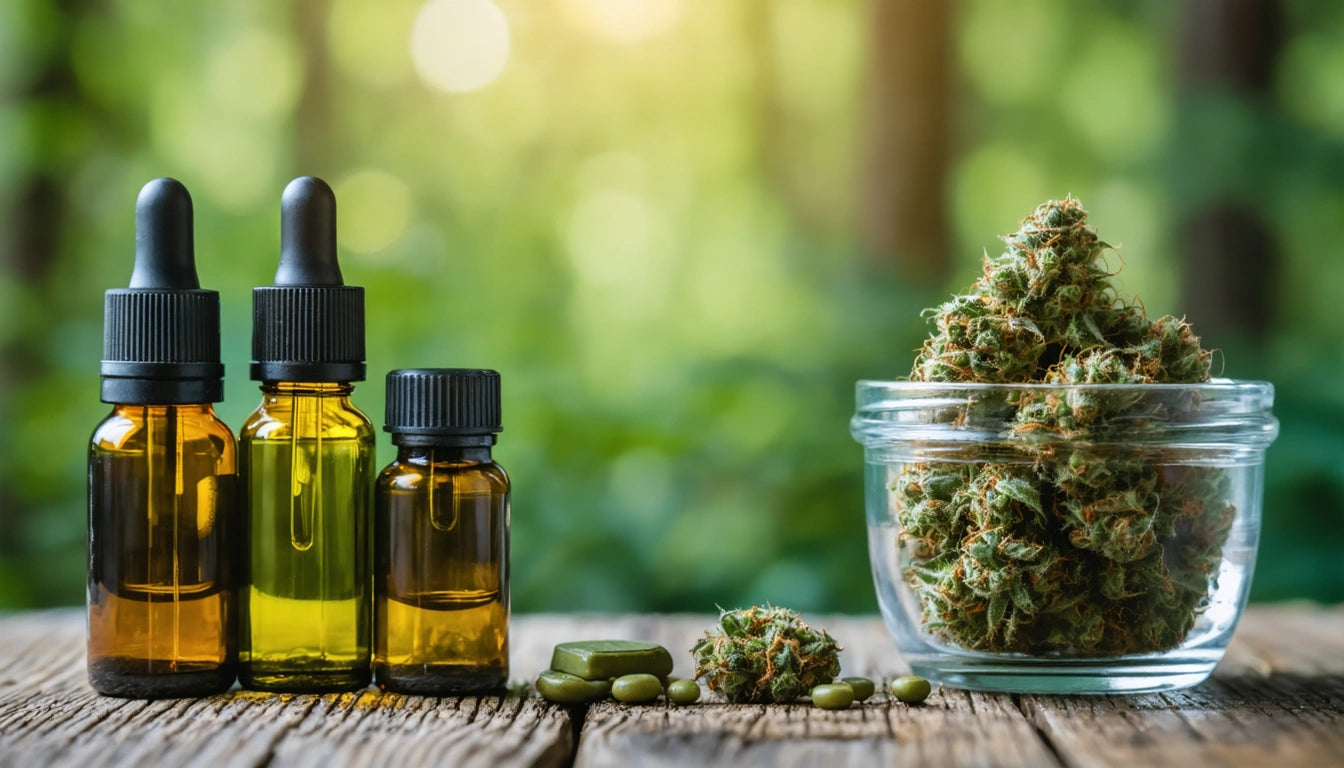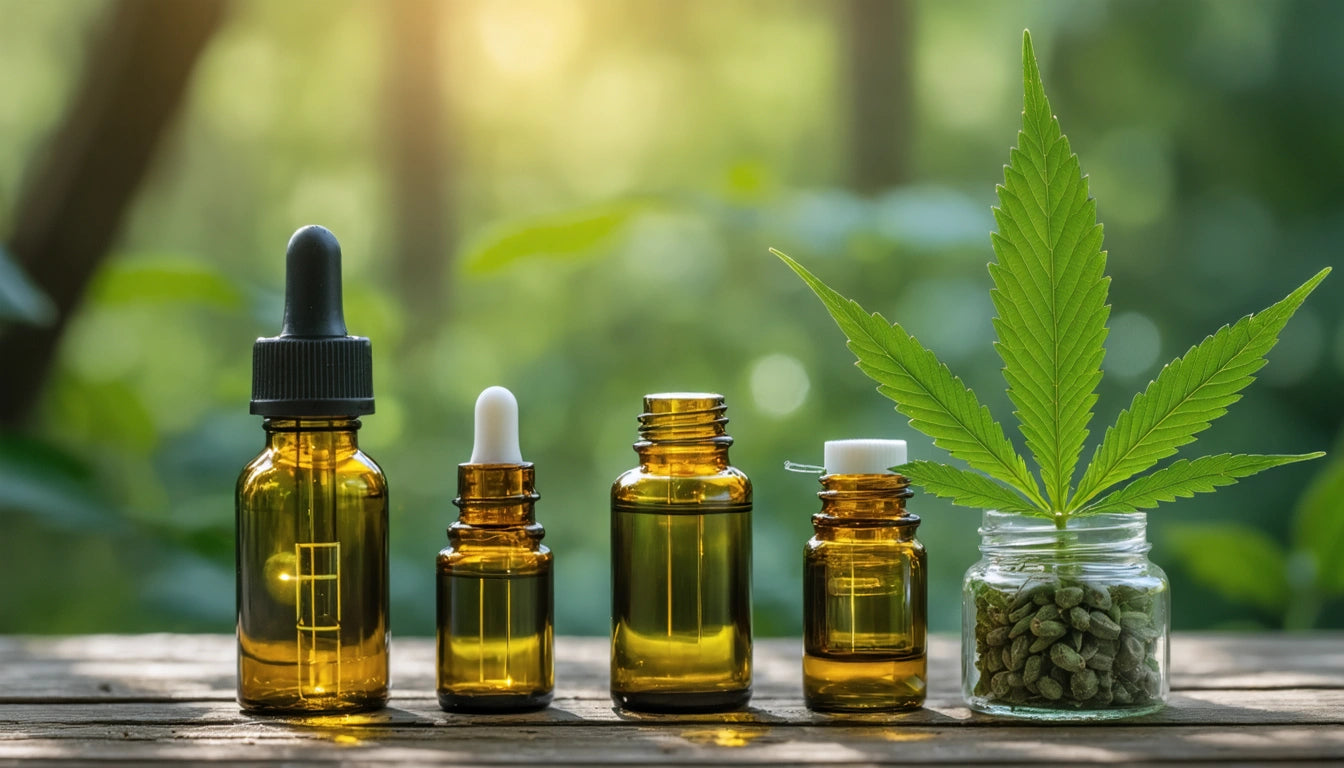Tinctures vs Edibles: Comparing Cannabis Consumption Methods
When exploring cannabis consumption options, the debate between tinctures vs edibles often arises among both newcomers and experienced users. Each method offers distinct advantages in terms of onset time, duration, dosage precision, and overall experience. Understanding these differences helps consumers make informed choices based on their specific needs and preferences.
Fundamental Differences: Tinctures vs Edibles
Tinctures are liquid cannabis extracts typically made using alcohol or oil bases. They're administered sublingually (under the tongue) using a dropper for precise dosing. Cannabis tinctures offer fast-acting effects through sublingual absorption, bypassing the digestive system.
Edibles, conversely, are food products infused with cannabis extracts. They come in various forms including gummies, chocolates, baked goods, and beverages. Edibles must pass through the digestive system before entering the bloodstream, which affects both onset time and potency.
Absorption and Onset: Speed and Efficiency
Tincture Absorption
When using tinctures, compounds are absorbed directly into the bloodstream through the mucous membranes under the tongue. This sublingual method typically produces effects within 15-45 minutes, making tinctures significantly faster-acting than edibles. Proper tincture usage involves holding the liquid under the tongue for 30-60 seconds before swallowing to maximize sublingual absorption.
Edible Absorption
Edibles follow a longer path through the digestive system. Cannabis compounds must be processed by the liver, where THC converts to 11-hydroxy-THC, a more potent form that can cross the blood-brain barrier more effectively. This digestive process typically results in onset times of 30 minutes to 2 hours, depending on metabolism and whether the consumer has eaten recently.
Dosage Control and Consistency
One significant advantage in the tincture vs edible comparison is dosage precision. Tinctures allow for incremental dosing through calibrated droppers, making it easier to find your optimal dose. This precision is particularly valuable for medical users or those sensitive to THC.
Edibles present more challenges for consistent dosing. Despite manufacturer efforts to distribute cannabinoids evenly, homogeneity can be difficult to achieve in food products. Additionally, the delayed onset can lead to overconsumption when users grow impatient and take additional doses before feeling the full effects of the first dose.
For those wondering are tinctures better than edibles in terms of dosage control, tinctures generally offer superior precision for new users or those requiring exact amounts.
Duration and Effects Profile
When comparing edibles vs tinctures, duration of effects represents another key difference:
- Tinctures typically produce effects lasting 2-4 hours
- Edibles commonly last 6-8 hours, sometimes extending to 12 hours
- Tincture effects tend to be more cerebral when absorbed sublingually
- Edible effects are often described as more intense and full-body oriented
The longer duration of edibles makes them popular for conditions requiring extended relief, such as chronic pain or sleep disorders. Tinctures, with their shorter duration, may be preferable for daytime use when users need more control over the experience timeline.
Tincture duration and effects can be somewhat customized based on whether the user holds the liquid sublingually (faster onset, shorter duration) or immediately swallows it (slower onset, longer duration similar to edibles).
Discretion, Storage, and Practical Considerations
Both consumption methods offer discretion, but in different ways. Tinctures come in small bottles easily stored and used without attracting attention. A few drops under the tongue can be administered quickly and privately.
Edibles offer the advantage of looking like ordinary food items, making public consumption less conspicuous. However, proper storage becomes crucial to prevent accidental consumption by others, particularly children or pets.
Storage requirements also differ between these methods:
- Tinctures typically have longer shelf lives (1-3 years when properly stored)
- Oil-based tinctures should be kept away from heat and light
- Edibles generally have shorter shelf lives (weeks to months depending on the food base)
- Most edibles require refrigeration to maintain potency and prevent spoilage
Safety Regulations and Packaging Requirements
Both tinctures and edibles must adhere to strict safety regulations, particularly regarding child-resistant packaging. According to safety standards for consumer products, packaging must be significantly difficult for children under five to open while remaining accessible for adults. This requirement is especially critical for edibles that might visually appeal to children.
Most jurisdictions require:
- Child-resistant closures on tincture bottles
- Tamper-evident seals
- Clear labeling of THC/CBD content
- Warning statements
- Opaque, resealable packaging for edibles
These safety measures help prevent accidental consumption while ensuring product integrity and consumer confidence.
Choosing the Right Method for Your Needs
When deciding between tincture vs edibles, consider these factors:
- Onset time needed: For faster relief, tinctures offer advantages
- Duration required: For extended effects, edibles typically last longer
- Dosage precision: Tinctures provide more accurate, incremental dosing
- Discretion requirements: Both offer discretion in different contexts
- Taste preferences: Some find tinctures' taste unpleasant compared to flavored edibles
- Digestive sensitivities: Those with digestive issues may prefer tinctures
Many consumers ultimately incorporate both methods into their routine, using tinctures for quick, precisely-dosed relief and edibles for longer-lasting effects or recreational experiences. Making and using tinctures can also be customized to individual preferences, while edibles offer convenience for those seeking pre-made options.
Understanding the distinct characteristics of each consumption method empowers consumers to make choices aligned with their specific needs, preferences, and lifestyle requirements.











Leave a comment
All comments are moderated before being published.
This site is protected by hCaptcha and the hCaptcha Privacy Policy and Terms of Service apply.